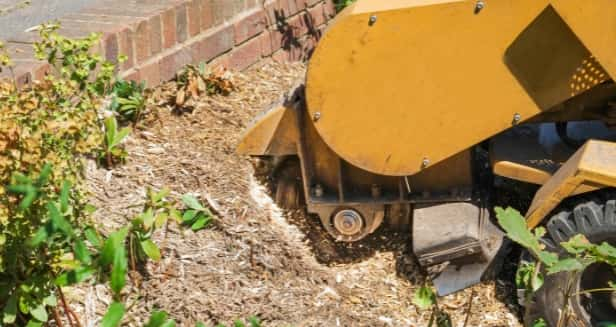A well-laid patio is a great feature in any Bury St Edmunds garden, but when tree roots start to push through and lift slabs, it can become more of a hazard than a highlight. Uneven surfaces create trip risks, damage outdoor furniture arrangements, and affect the overall appearance of your garden. The main culprit is often a nearby tree whose roots have grown far enough to disturb the patio foundation.
Dealing with a tree that’s uplifting your patio requires a careful, professional approach. Simply chopping it down is not enough – you need to address both the visible structure and the root system to prevent further damage.
Why Trees Uplift Patios
Several factors make certain trees more likely to cause patio problems:
- Shallow but aggressive root systems – Species such as willows, poplars, and sycamores often have roots that spread near the surface.
- Proximity to the patio – A tree planted too close will naturally send roots into the compacted base beneath paving slabs.
- Moisture and soil movement – Roots search for water, and during dry periods they may disturb soil, loosening the ground beneath the patio.
Over time, these factors can cause noticeable lifting, cracking, and shifting of paving stones.
Steps for Safe Tree Removal
When a tree is affecting your patio, the removal process should be methodical to protect your property and garden.
1. Assessment
A tree surgeon will inspect the species, size, and condition of the tree to determine the best method of removal. They will also check the extent of root spread beneath the patio.
2. Sectional Felling
Rather than cutting the tree in one go, the process often involves dismantling it in sections. This is safer and prevents damage to nearby features.
3. Stump Removal or Grinding
Leaving a stump in the ground means roots can still affect the patio’s stability. Stump grinding eliminates the base, reducing the likelihood of regrowth and making it easier to restore the patio foundation.
4. Root Management
Depending on the root system, some roots may need to be excavated or cut back carefully to avoid impacting nearby plants, fences, or utilities.
5. Patio Repair
Once the tree and problematic roots are removed, the patio can be relaid with a stable base to prevent future movement.
Why Professional Tree Surgery Is Essential
Attempting to remove a tree that’s disturbing your patio without the right skills and equipment can lead to:
- Damage to paving, property, or nearby structures
- Personal injury from falling branches or heavy sections
- Incomplete removal, allowing the problem to return
- Disturbance to surrounding landscaping and soil stability
A professional tree surgeon has the tools, training, and techniques to carry out the work efficiently and safely, ensuring the issue is fully resolved.
Preventing Future Patio Damage
If you are planning a new patio, keep these tips in mind:
- Plant new trees at least 5–6 metres away from hard landscaping.
- Choose species with less invasive root systems.
- Install a root barrier during planting to control future growth.
- Schedule regular tree inspections to monitor root development.
Conclusion
When a tree begins to uplift your patio, it’s more than just an eyesore – it’s a sign of ongoing root disruption that can worsen over time. Professional removal ensures both the tree and its problem-causing roots are dealt with safely, allowing you to restore your patio to its original, level condition. In Bury St Edmunds, a skilled tree surgeon can provide the expertise needed to protect your outdoor space, prevent further damage, and keep your garden both attractive and safe for years to come.
Call us on: 01284 339 498
Click here to find out more about Bury St Edmunds Tree Surgeons
Click here to complete our contact form and see how we can help with your tree needs.

